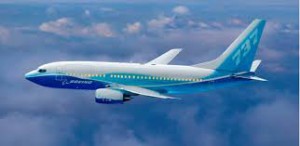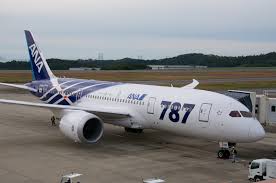 A fully automated 737 MAX engine parts plant (225,000-square-foot plant) has been opened by Boeing in North Charleston (South Carolina). This site represents the company s re-entry into an engine parts business that it had once given up to suppliers.
A fully automated 737 MAX engine parts plant (225,000-square-foot plant) has been opened by Boeing in North Charleston (South Carolina). This site represents the company s re-entry into an engine parts business that it had once given up to suppliers.
For a long time now, a lot of this had been out into the supply chain, Ray Conner, president and CEO of Boeing Commercial Airplanes, said Wednesday during an opening ceremony. That s not to say they weren t doing a good job. It s just the fact that we wanted to be more involved in this so we could do a better job for our customers and maintain our competitive edge.
Propulsion South Carolina brings much of that work in-house for the first time in more than a decade.
The Palmetto Commerce Park plant is Boeing s only facility to design and make engine inlet components for the single-aisle 737 MAX, the aerospace giant s next generation of the popular 737 model. The factory also will design fan cowls for the 737 MAX and will engineer and design engine nacelles for the wide-body 777X, which begins production later this year.
The work for the 777X was announced Wednesday and was only recently added to the plant s portfolio. Spirit AeroSystems of Wichita, Kan., will use Boeing s engineering and design to build the nacelles.
The 225,000-square-foot plant which is nearly empty now while it awaits equipment employs about 150 people, mostly engineers and mechanics, and will be fully automated by the time production begins later this year. Charlie Hix, director of Propulsion South Carolina, said as many as 16 robots will build the engine parts under the watch of 50 to 80 employees over two shifts. Once production is fully ramped up, the plant will produce one engine inlet about every three hours.
We will house, in just the next several months, one of the aerospace industry s most advanced automated manufacturing systems, said Nicole Piasecki, vice president and general manager of Boeing s propulsion systems division. Conner said Boeing did a bit of soul searching in 2008, when the company first decided to expand its 787 Dreamliner production to South Carolina, to determine where all of its operations were headed.
We made a decision on what we wanted to be involved in and what we didn t want to be involved in, Conner said. One of the things that we said we really needed to get back to was being part of the propulsion system design and the manufacturing. We felt like this needed to be a core competency of the Boeing Co.
Conner said Boeing then decided to regroup and rebuild its propulsion system, but had no idea it would wind up in South Carolina. Piasecki said the company chose North Charleston because the Dreamliner facility s track record just a few miles away showed that the area has a talented workforce and business-friendly environment and because the propulsion plant brings synergies with other Boeing properties.
Although the propulsion plant officially opened Wednesday, local design work for the 737 MAX engine parts began about six months ago. Hix said the new North Charleston operation will get into the real heavy lifting of the design and stress engineering in June and deliveries will start soon after that. The engine inlet for the 737 MAX will reduce the drag of the airplane by a fairly significant amount, Hix said, and act as a muffler for the engine fan, reducing the airplane s noise. The propulsion facility is part of a $1 billion investment Boeing announced in 2013 to create 2,000 new jobs in the Charleston region over the next eight years.
South Carolina now is part of the much bigger Boeing family of airplanes than we could have ever imagined back in 2008, Conner said. Jack Jones, the retiring vice president and general manager of Boeing South Carolina, said he never thought South Carolina would become a big player for Boeing when the Dreamliner plant first opened. Four years ago, when we were just starting to build the big facility, we really believed that we were going to peak at three and a half airplanes a month and that facility would pretty much be all we do, said Jones, who will retire by May 1. Beverly Wyse, who led Boeing s 737 program for five years, will succeed Jones.
The reason we re here today is because of the success of the (Dreamliner) team, Jones said. We re not just building three and a half, we re going to go to seven (a month). … They (Boeing executives) said if we can be that successful for a main facility, we can be successful in smaller-part assembly like what they re doing here. The propulsion facility will be Boeing s first in this area that is not tied to production of the  Dreamliner. What s exciting is it s not the 787, Jones said. What we re telling the world is it doesn t just have to be the 787. It can be the 737 and others.
Dreamliner. What s exciting is it s not the 787, Jones said. What we re telling the world is it doesn t just have to be the 787. It can be the 737 and others.
In addition to the Dreamliner campus adjacent to Charleston International Airport, the propulsion facility joins Boeing s research and development center and its Interiors Responsibility Center, which makes bins, partitions and other parts for the Dreamliner, at the Palmetto Commerce Park. The company also is building a 256,000-square-foot paint facility at its Dreamliner plant so airplanes won t have to be flown to other sites for their final exterior artwork. The Chicago-based planemaker employs about 7,000 workers in the region, most of them at the Dreamliner campus. The company also has propulsion employees in the Puget Sound area of Washington state, Long Beach, Calif., and Cincinnati.



